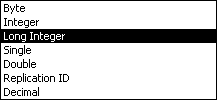Specifying Field Length in Microsoft Acces
The Field Length property allows you to set the size of the data you want to allow.
This is very useful for two data types: Text and Numbers.
For Text type values, Access uses variable-length fields, which means Access uses disk space only when data is actually entered. Specifying the field length enables you to set a maximum amount of characters that will be allowed in the field.
The Field Length property is mostly used with the Numbers data type. By setting this property, you are telling Access not only the type of number you want to use, but also the size to make the value. Look at the graphic below to see which types of numbers can be used with each Field Length entry. In the next lesson, we will conclude this module.
For Text type values, Access uses variable-length fields, which means Access uses disk space only when data is actually entered. Specifying the field length enables you to set a maximum amount of characters that will be allowed in the field.
The Field Length property is mostly used with the Numbers data type. By setting this property, you are telling Access not only the type of number you want to use, but also the size to make the value. Look at the graphic below to see which types of numbers can be used with each Field Length entry. In the next lesson, we will conclude this module.

Records and fields
A datasheet is divided into rows (called records) and columns (called fields), with the first
row (the heading on top of each column) containing the names of the fields in the database.
Each row is a single record containing fields that are related to that record.
In a manual system, the rows are individual forms (sheets of paper), and the fields are equivalent to the
blank areas on a printed form that you fill in. Each column is a field that includes many properties that specify the type of data contained within the field, and how Access should handle the field’s data. These properties
include the name of the field (Company) and the type of data in the field (Text). A field may include other properties as well. For example, the Address field’s Size property tells Access the maximum number of characters allowed for the address.